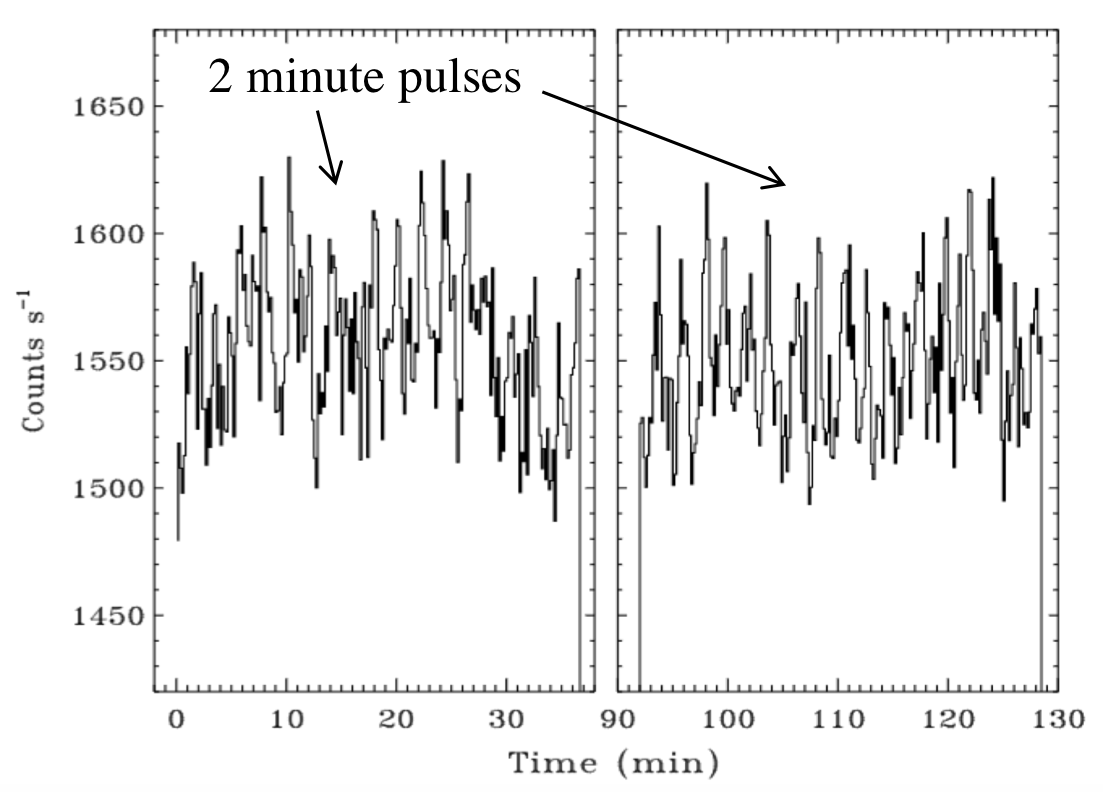NICER / ISS Science Nugget for August 16, 2018NICER discovers oscillatory nuclear burning in GS 1826-238GS 1826-238 is an accreting neutron star binary system known as a Low Mass X-ray Binary (LMXB). In these objects, a low-mass companion star loses matter to the neutron star. In about 100 such systems known, X-ray emission can be powered by thermonuclear fusion, the same energy source that fuels our Sun. The accreted matter, mostly hydrogen and helium with a mix of heavier elements, piles onto the neutron star. When enough matter has piled up, the pressure and density at the base of the accreted layer are sufficient to trigger fusion of hydrogen and helium into heavier elements. This releases an enormous amount of energy, resulting in a bright flash of X-rays known as a thermonuclear X-ray burst. How much energy? A typical burst can release energy equivalent to 100 15-Megaton H-bombs exploding over every square centimeter of surface area! NICER studies such explosions, including from GS 1826-238, because they light up the neutron star surface and its immediate surroundings, providing a unique and detailed view. This typical bursting behavior is called unstable burning, but less frequently these systems can display another type of burning. In this "marginally stable" regime the conditions allow the burning layer to cool rapidly enough that the whole surface doesn't explode all at once. Rather, a pulsating mode of burning occurs, with alternating periods of thermonuclear heating followed by cooling. Theoretical calculations indicate that the X-ray emission should pulse with a period of about 2 minutes. So far, this has only been seen in a handful of LMXBs, and never before in GS 1826-238. However, on at least five separate occasions NICER observed GS 1826-238 to be pulsing with a period close to 2 minutes, consistent with marginally stable oscillatory nuclear burning of hydrogen and heluim on the neutron star surface. The X-ray spectrum is consistent with thermal emission from the neutron star surface, at temperatures of about 8 million Kelvin. The brightness oscillation is consistent with temperature changes of approximately 2%, and the presence and apmlitude of pulses are sensitive to the mass accretion rate. The properties of the pulses are dependent on the neutron star's surface gravity (M/R2) and hydrogen abundance. Details of this study have been published in the Astrophysical Journal, as NICER's 11th peer-reviewed publication. Further study with NICER will provide important new information about the neutron star in this system. NICER
|



